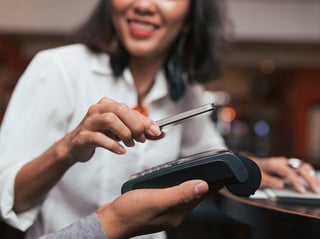TechBytes: Not Your Father’s POS
The POS has never been the most flashy or talked-about solution in the retail IT environment.
From manual cash registers up to client/server-based terminals, the basic idea of the POS as a fixed box that takes payment in and spits receipts out stayed pretty much the same.
In recent times, that has all changed. Advances in consumer connectivity and mobile device capabilities have transformed the POS to a dynamic point of customer interaction. The POS can now serve as the heart of a healthy and lively omnichannel shopping experience. In honor of Father’s Day, let’s go through a few ways that today’s checkout technology is hardly your father’s POS.
First, the days of POS being synonymous with “fixed” are long over. Thanks to the advent of Unified Commerce, which is a real-time store environment that uses a cloud-based infrastructure to lessen reliance on hardware, traditional POS terminals are no longer necessary.
Many retailers have now partially or wholly replaced their installed base of fixed POS terminals with mobile devices. This greatly lessens the cost of POS implementation, upgrade and maintenance. In addition, it allows store associates to check consumers out wherever and whenever they are ready, eliminating annoying lines.
Retailers can even offer mobile self-checkout service to consumers. Using apps, retailers can further extend the value and convenience of self-checkout by letting consumers check out using their own smartphones or tablets. This includes buy online pickup in store or click and collect programs that let shoppers purchase items from store inventory ahead of time and then prove payment via mobile barcode, SMS text, or other digital confirmation.
The POS also now provides services far beyond simply executing customer transactions. Retailers have been offering customers discounts on future purchases based on what they check out for some time.
However, real-time tracking of customers who opt in to be identified by their mobile device now allows retailers to provide on-the-spot discounts, cross-sells and upsells at the point of sale. This enables retailers to increase the size of the market basket while the customer is in the store and already committed to making a purchase, rather than trying to lure them back. The POS can even provide targeted discounts to customers as they walk in the door, helping drive conversion rates.
On the back end, real-time connection to order management, distribution and fulfillment systems enables retailers to leverage the POS as a seamless inventory management application. The moment an item is purchased, the POS can now notify the appropriate personnel and/or systems that a replacement item is needed.
Whether this means bringing something out from the back room or scheduling a delivery from a fulfillment center, the POS can serve as a valuable tool for minimizing out-of-stocks or supply chain mistakes. Especially as omnichannel purchases, which may start in one channel before ending at the store, complicate tracking inventory and assigning credit for sales, having the POS as a real-time supply chain management solution is a significant benefit.






